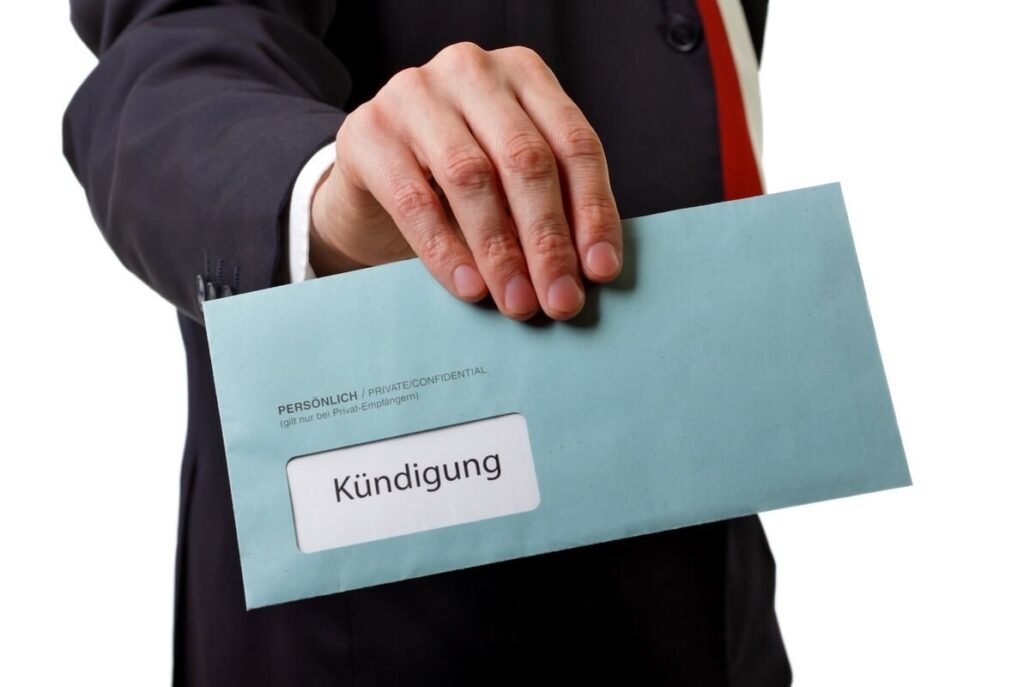

When an employer issues a termination notice, it must first be received by the employee. Only with the receipt of the notice does the notice period begin, as well as the three-week deadline for filing an unfair dismissal claim. Whether and when a termination is considered received can have major financial consequences. For example, if a notice with three months’ notice to the end of a quarter reaches the employee on 30 September, the employment ends on 31 December. If the same notice arrives one day later, on 1 October, the employment ends on 31 March. That means three extra months of salary. The delivery and proof of receipt of a termination often cause disputes. This article explains when a termination is legally received and what employees should keep in mind.
Unfairly dismissed in Germany?
Check your severance pay now – you have only 3 weeks to preserve your severance package!
Key takeaways
- A termination is a “declaration of intent requiring receipt.” It becomes effective only once received.
- The notice period and the three-week claim period for an unfair dismissal claim both start with receipt of the notice.
- If handed over in person, the notice is received immediately.
- If sent by post, receipt occurs when the letter is placed in the employee’s mailbox and could “reasonably be read under normal circumstances” (not when it was actually read).
- In case of an employer’s termination, the employer must prove receipt and the exact time of delivery.
Content
Basic rules for the receipt of a termination
A termination is a declaration requiring receipt. That means it only takes effect once the employee actually receives it.
Example: An employer wants to terminate an employee. The signed termination letter sits on the employer’s desk for a week. Until the letter leaves the desk and reaches the employee, no termination has been made.
Delivery can happen in two ways:
- The employer (or an authorized person) hands the letter to the employee.
- The employer sends the letter via courier or post.
Generally, a termination is considered received once it leaves the employer’s control and enters the employee’s sphere of influence (e.g., home mailbox). The same applies when an employee resigns.
Consequences of receipt
Receipt is crucial for two reasons:
- Notice period: Example: An employee receives a termination on 30 April with one month’s notice to the end of the month. The employment ends on 31 May. If the employee receives the letter one day later, on 1 May, the employment ends on 30 June. That means an extra month’s salary.
- Deadline for unfair dismissal claims: The three-week deadline to file an unfair dismissal claim starts with receipt. If the employee misses this deadline, the termination is considered valid from the start.
Do you need help with German labor law?
Get a free initial consultation now – with an expert on German labor law!
The termination must be in writing
A termination must always be in written form. Electronic terminations by email, WhatsApp, or similar are invalid. The notice must be a paper hardcopy with a handwritten signature (“wet-ink”). Because this rule feels outdated in today’s digital world, mistakes happen often—especially in international companies unfamiliar with German law.
Equally important: The signature must come from a person authorized to dismiss, such as the managing director, board member, or HR director. A notice signed without proper authority can be immediately rejected (§ 174 BGB). Such a termination is invalid.
When is a termination considered received?
A termination is received once it enters the employee’s sphere of influence and could be accessed under normal circumstances. It does not matter when the employee actually reads it.
Ways of delivery:
- Personal handover: receipt is immediate.
- Mailbox delivery: receipt occurs when, according to common practice, the letter could be collected during the next expected mailbox check. Disputes often arise if delivery happens late in the day or on weekends.

Free initial consultation with a specialist lawyer
- 15min free initial consultation with a lawyer
- Prompt online appointment via Calendly or quick call-back
- Strategy for negotiating your severance pay
Recent court ruling on receipt
A 2024 decision by the Federal Labour Court (Bundesarbeitsgericht, BAG) highlights how important the exact time of receipt can be.
In this case, the employer and employee had agreed on a three-month notice period to the end of a quarter. The employer gave notice to terminate by 31 December 2021. The letter was placed in the employee’s mailbox on 30 September 2021. But the employee argued it was only delivered on 1 October, claiming no post could be expected at that time of day. She wanted the employment to continue until 31 March 2022.
The courts at all levels rejected her claim. The BAG ruled that delivery occurs once the letter is in the mailbox and the employee could reasonably take note of it. What matters is the usual time of postal delivery, which depends on the working hours of postal staff and delivery routes. Even if delivery happens late in the evening, employees must expect it. As the employee could not prove exceptional circumstances (such as a postal strike or frequent misdeliveries), the court held that receipt occurred on 30 September. The termination was therefore effective to 31 December 2021.
Burden of proof
The party giving notice must prove delivery. If an employer gives notice and the employee denies receipt, the employer must prove the service of the termination notice.
- Ordinary mail: offers no proof of delivery. If the employee denies receipt, the employer has no evidence.
- Registered mail (Einwurf-Einschreiben): provides stronger evidence, as the letter is placed in the mailbox even if the employee is absent. A delivery slip is created, but it is still not absolute proof.
- Registered mail with return receipt: shows that the letter was delivered on a certain date. But if the postman cannot hand it over, only a collection slip is left. The notice counts as received only once the employee collects it. If not collected, the termination is not validly delivered. Courts may treat refusal to collect as abusive, but it depends on the case.
- Courier or messenger delivery: Often used to ensure proof. With one or even two witnesses, it becomes difficult for the employee to deny receipt.

How much severance pay are you entitled to? Calculate now!
- Calculate your individual severance pay for free
- Calculation of the standard payment up to a very high settlement
- Get a strategy to maximise your severance pay
Frequently asked questions (FAQ)

How much severance pay are you entitled to? Calculate now!
- Calculate your individual severance pay for free
- Calculation of the standard payment up to a very high settlement
- Get a strategy to maximise your severance pay




